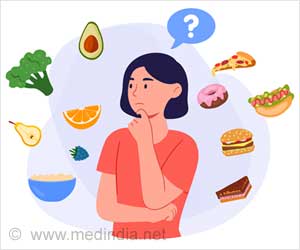Dr. Dariush Mozaffarian, lead author of the study and dean of the Friedman School of Nutrition Science and Policy.
It is important to have a system that rates the vivid variety of foods to guide consumers, policymakers, and even industries towards healthier choices.
How the Food Ranking System Works
A detailed database of 8032 foods was tested and scored the foods in 54 different characteristics and gives a score based on nine factors:
- Vitamins
- Minerals
- Nutrient ratios
- Food ingredients
- Additives
- Processing
- Fiber/protein
- Specific lipids
- Phytochemicals
The system gives the food a score ranging from 1 being the least healthy to 100 being the healthiest.
Researchers found that foods that scored 70 or more are good for daily consumption. The ones scoring 31-69 should be eaten in moderation and anything scoring 30 or lower should be consumed minimally.
Instead of categorizing food by just one nutrient, this system factored many nutrients and health features into their system to categorize foods. This is a more concrete guideline for consumers.
Where Foods Ranked
In the Food Compass system:
- The category that scored the highest was fruits, with an average score of nearly 74.
- Vegetables had an average score of 69.
- Legumes, nuts, and seeds with an average score of 68.
- Eggs, milk, and cheese scored an average of 62, while poultry was in the mid-forties and red meat twenties.
- The snacks and sweet desserts category had the lowest average score of 16.
- The average score for sugar-sweetened sodas and energy drinks was 27.6.
- A skimmed milk cappuccino scored 73 due to the calcium and protein content, plant components, and beneficial antioxidants such as polyphenols that have been linked to the prevention of disease.
- Among beverages, celery juice was the healthiest drink, scoring 100 due to its antioxidant content. It also contains more potassium and vitamin K, than tomato juice and carrot juice.
Determining What is Healthy
Nutrient density is one of the factors that determine how healthy a food is. It is the ratio of the number of nutrientsto the calorie content.
A food with high nutrient density, such as fruits and vegetables, has many nutrients and fewer calories. A food with low nutrient density, such as soda or candy, has few nutrients and a lot of calories.
Though the system may help people make better choices, it is not perfect. Only a registered dietitian can provide an individualized diet plan to improve food habits and accomplish health goals.
However, as a starting point to making healthier choices, limiting processed foods and focusing on plant-based choices is recommended.
Hence, Food Compass, a publicly available scoring algorithm can provide a refined approach in promoting healthy food choices and guiding consumer behavior, nutrition policy, scientific research, food industry practices, and socially based investment decisions.
References:
- Healthy Eating Plate
– (https://www.hsph.harvard.edu/nutritionsource/healthy-eating-plate/) - Healthy Eating for a Healthy Weight
– (https://www.cdc.gov/healthyweight/healthy_eating/index.html) - Healthy Eating – (https://www.helpguide.org/articles/healthy-eating/healthy-eating.htm)
Source: Medindia



